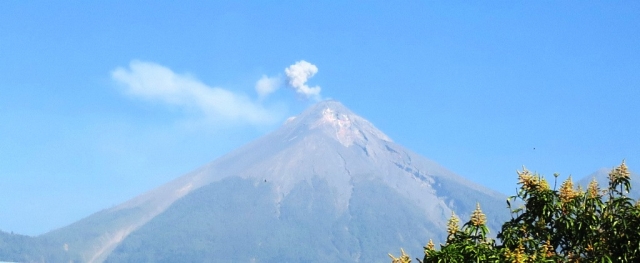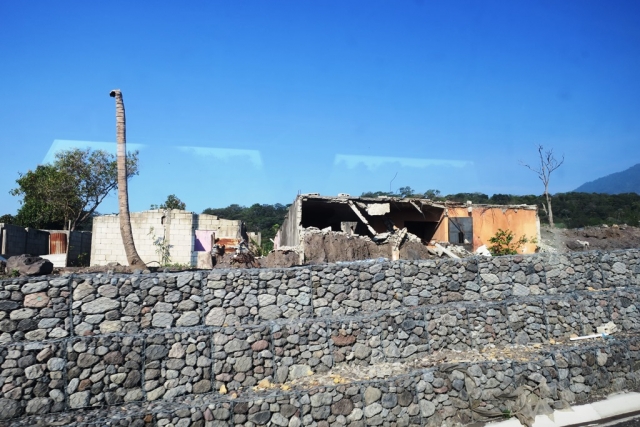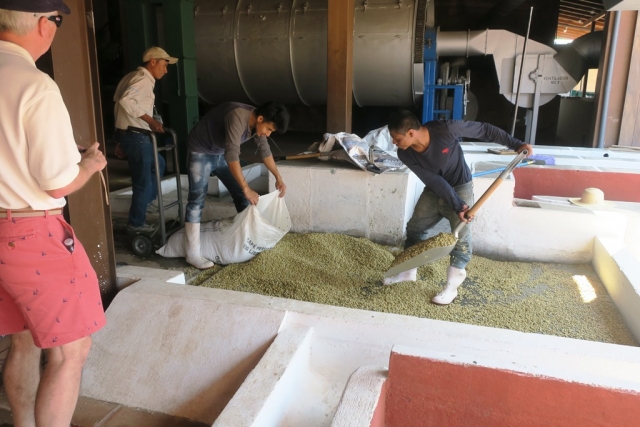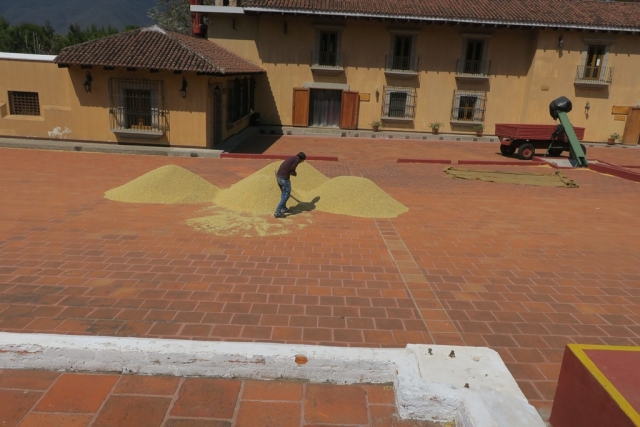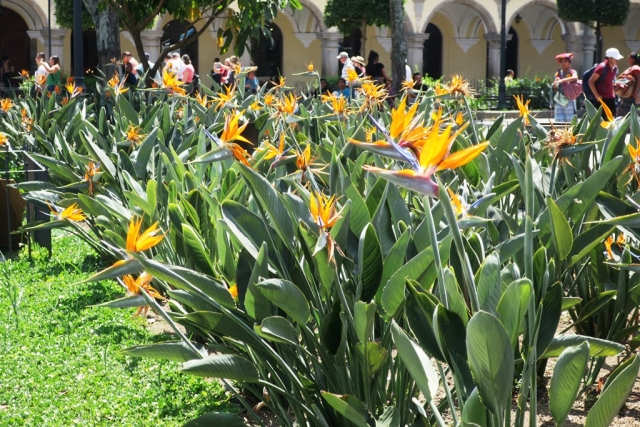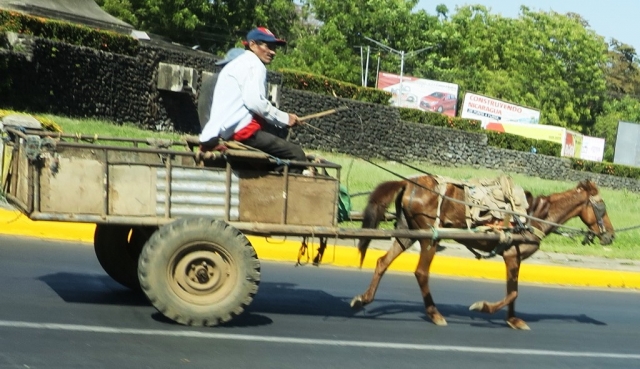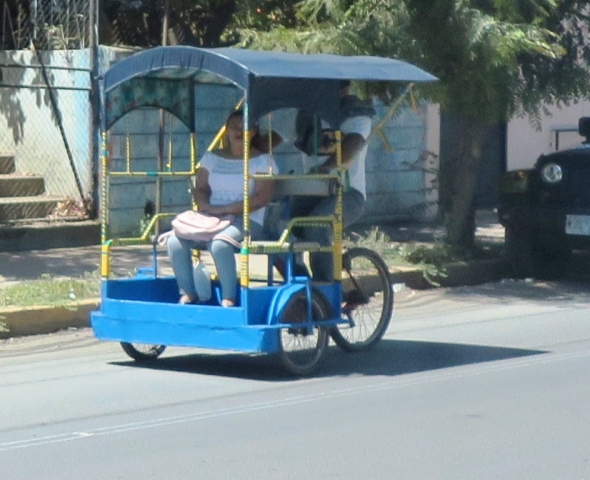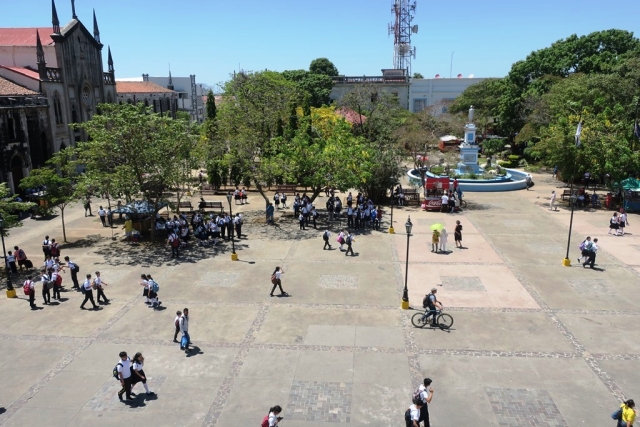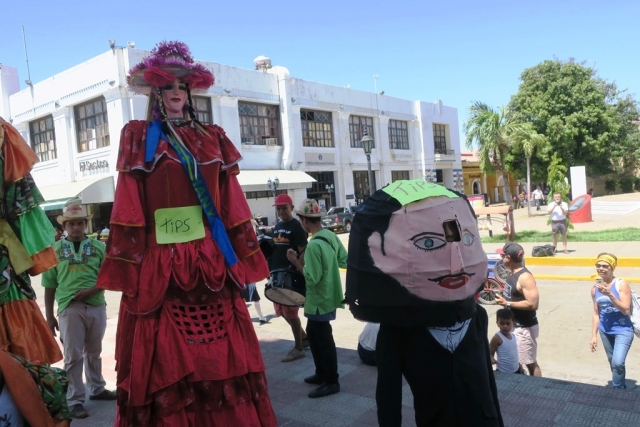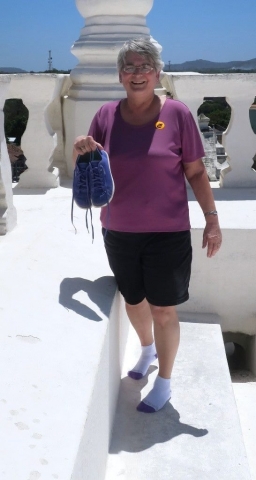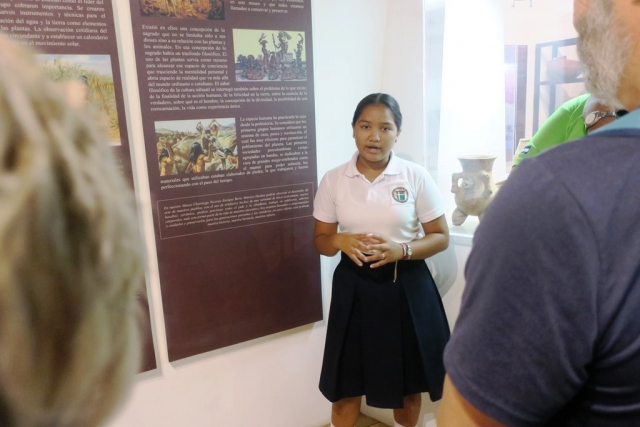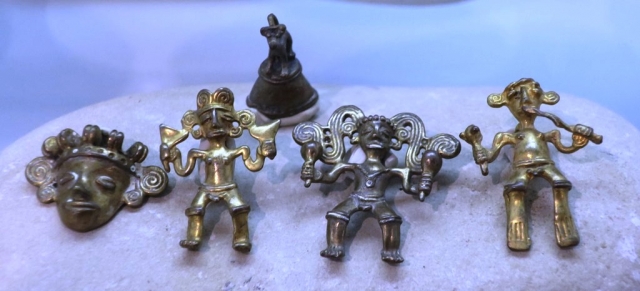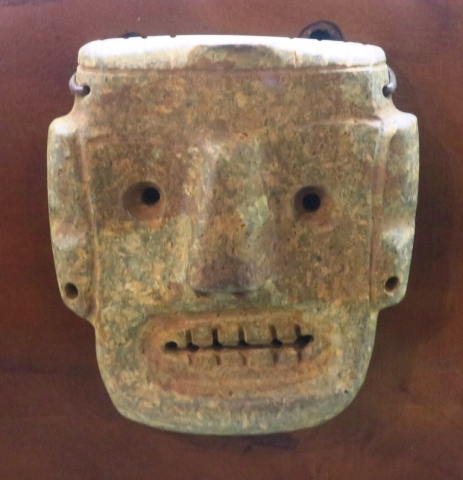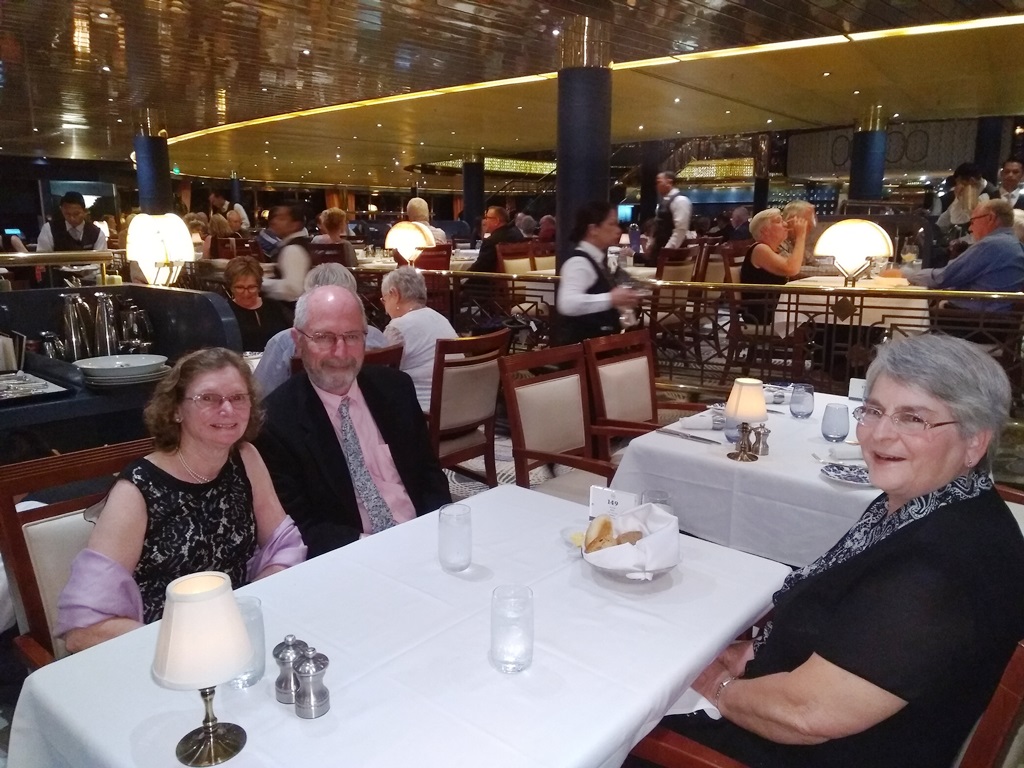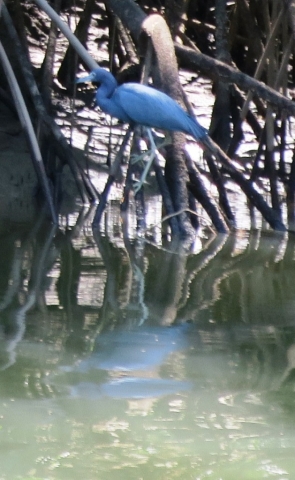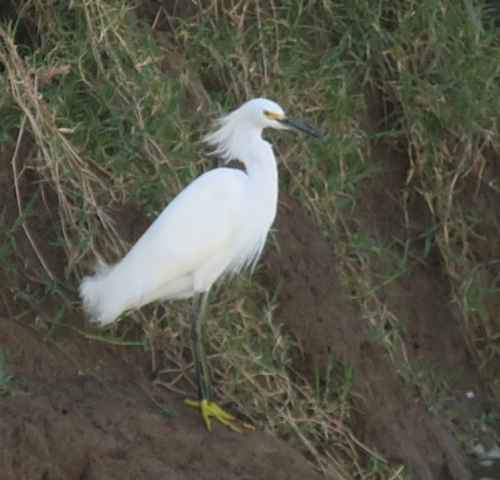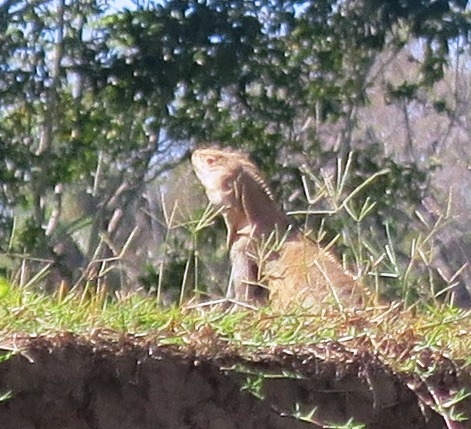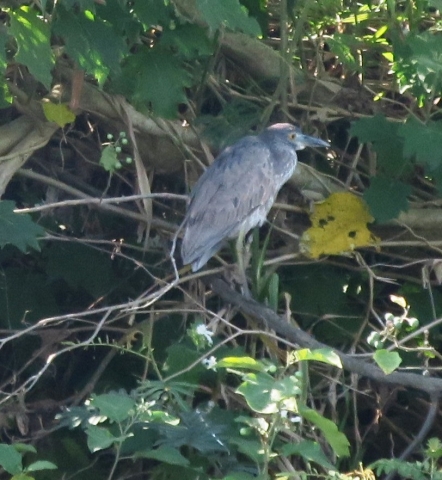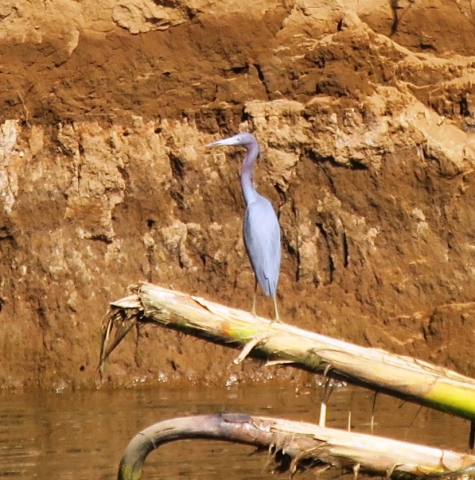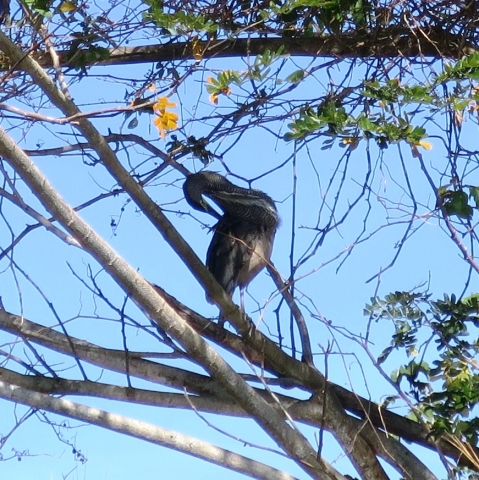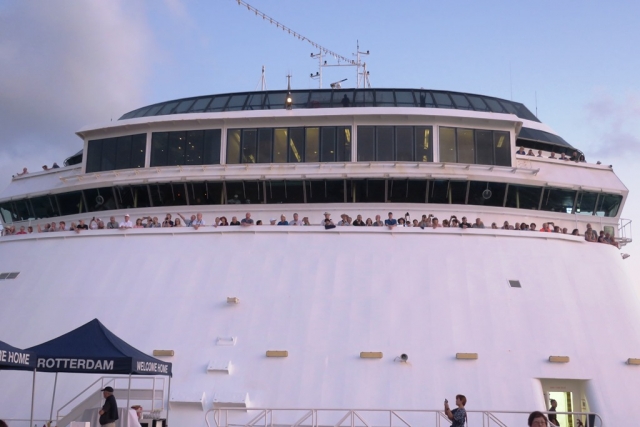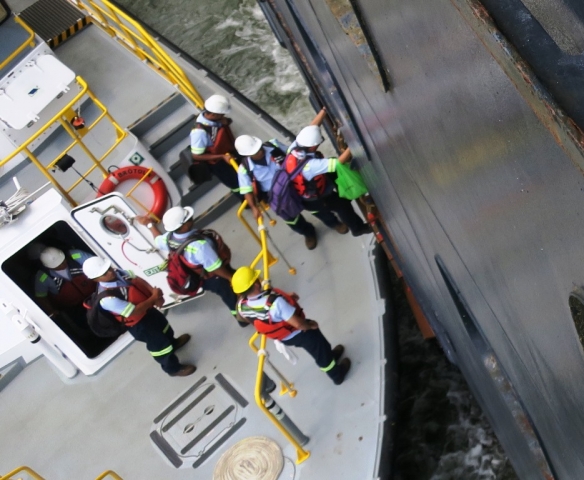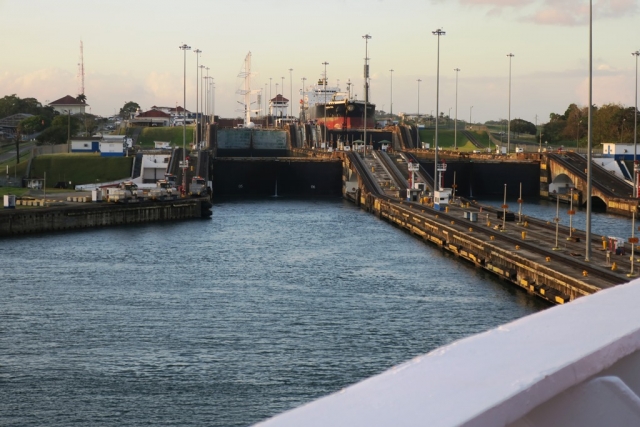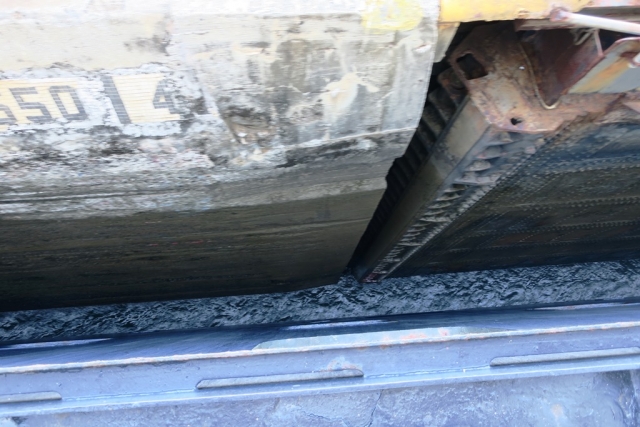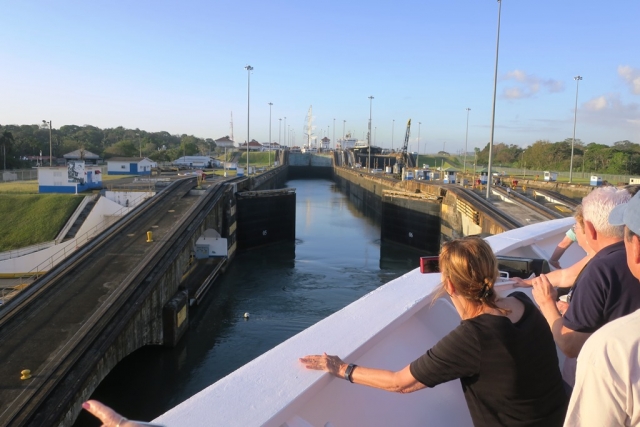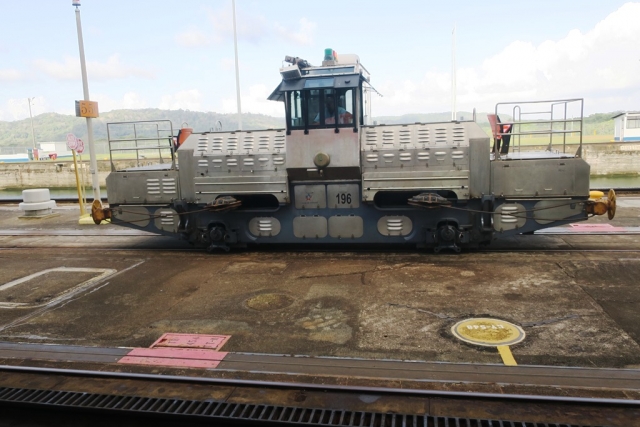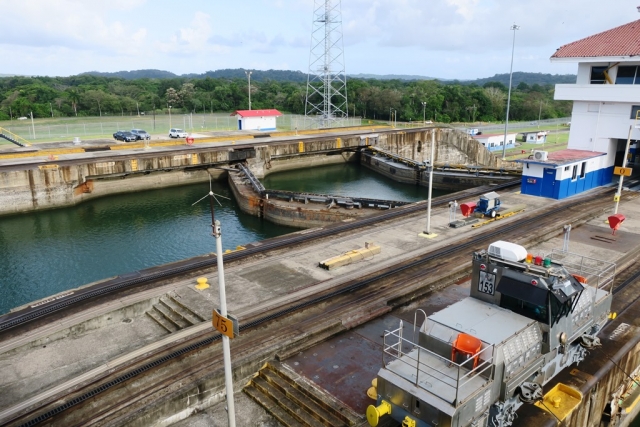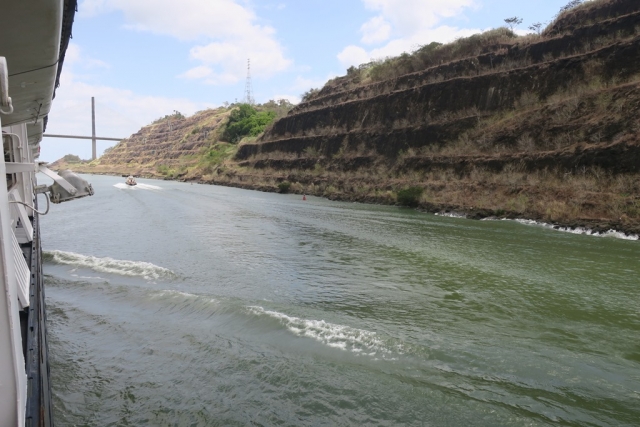Today we visited a coffee plantation and the city of Antigua. Guatemala has many of the same problems as Nicaragua. Only about 70% of the children go to school. They have many poor and a few rich. But they seem to have avoided the worst of the poverty. We saw no horse drawn carts. The horses we saw were well fed. There were no human-powered 3-wheeled bicycle taxis. We saw several “motorized rickshaws” called Tuk-tuks. There was one picture I wanted but didn’t get. They use “Chicken Buses” for public transportation. These are retired US school buses. They paint them vivid colors. They add chrome bumpers, grills, and roof racks. They add running lights and signal lights. Sometimes the driver will paint his girl friend’s name on the bus. It’s the ultimate in bus bling.
On the way out, we saw one of the volcanoes smoking. A village along our route was destroyed by volcanic ash. About 5,000 people lived in the village. The government claimed that they saved 2,000 villagers and 1,000 died. Most people think the government purposely understated the number of deaths.
At the plantation, we saw the entire coffee process. This plantation sells most of their coffee to Starbucks. They roast a little of their coffee for local consumption. We picked a few coffee beans and tasted them. They taste sweet.We saw the entire process. Most of the processing is done by hand. I was quite surprised to see workers walking on the beans and shoveling them with sturdy shovels. After the tour, we had an excellent lunch at the plantation’s restaurant.
After lunch we went down the street to Antigua. We were continuously accosted by people wanting us to buy flutes, table runners, and coffee bean jewelry.
Tomorrow is an “at sea” day. We’ve enjoyed excellent weather so far. The forecast is for the winds to pick up tomorrow. We expect 20 to 50 MPH winds with 30 foot waves. They moved our next port to a different one with a more protective harbor.
I hope this finds everybody doing well.

